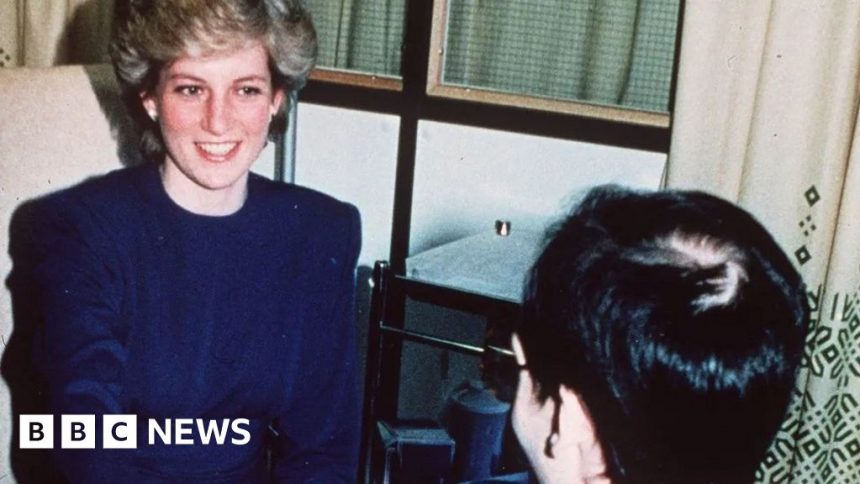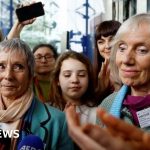Design revealed for Aids memorial near Diana ward
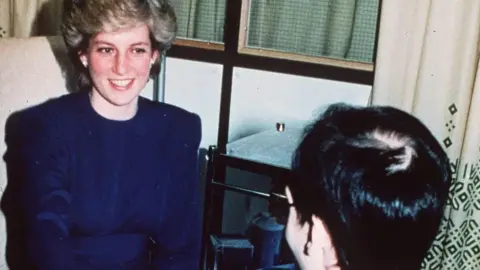 Getty Images
Getty ImagesArtist Anya Gallaccio will design London’s first permanent Aids memorial, just meters from the site of the UK’s first specialist HIV ward, opened by Diana, Princess of Wales.
The princess was credited with a shift in public attitudes towards the disease after she helped dispel the myth it could be transmitted by touch, by shaking hands with patients on the former Middlesex Hospital ward.
The Aids Memory UK project aims to raise awareness of the impact of the virus on four key groups of people, including gay and bisexual men and those affected by the infected blood scandal.
And campaigners say Wednesday’s announcement represents a “major milestone” in battling the stigma that still surrounds HIV (Human Immunodeficiency Virus) and Aids (acquired immune deficiency syndrome).
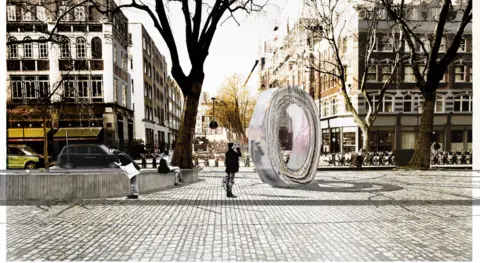 Rinehart Herbst
Rinehart HerbstA panel of representatives from the groups affected chose Gallaccio’s design from a short list featuring five London artists.
And she said it was important her design “reflected all experiences of HIV and Aids”.
“There was and is no singular experience of HIV and Aids,” Gallaccio told BBC News.
“So for me, it was about slightly redrawing that narrative to be more inclusive of those individuals and communities that may have been overlooked – 52% of people worldwide are women and girls of reproductive age and I think that’s something we don’t think about enough.”
Gallaccio’s design features the rings of a tree trunk placed upright, with its remaining hollow space laid out into a seating area, which she hopes will “invite visitors to interact and engage with the memorial”.
Her art rose to prominence in the 1980s, when she participated in Damien Hirst’s Freeze exhibition, along with others who became known as the Young British Artists.
And in 2003, she was short-listed for the Turner Prize.
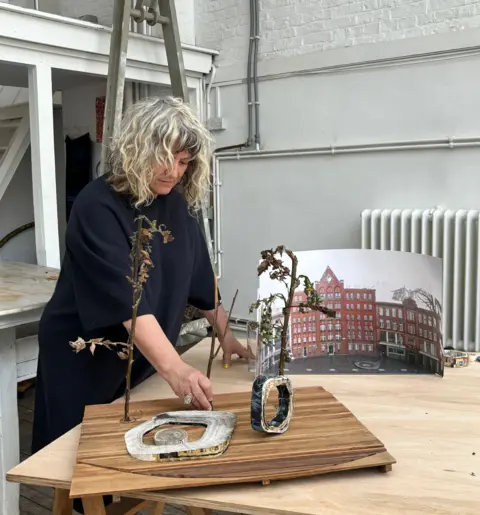 GW
GWOne of the UK’s longest-surviving HIV patients, Jonathan Blake, said the central London site chosen for the memorial was of great significance to those stigmatised for having the disease.
“What Diana did – that was a complete game-changer,” he told BBC News.
“She undoubtedly changed peoples perceptions of HIV/Aids – and it was a real turning point.
“Bit by bit, people started to feel OK to talk about it – and I hope that the memorial continues that, because it really is so important.
“The Middlesex Hospital was my comfort blanket when I was first diagnosed – and it’s touching to know that the memorial will be nearby.”
‘Changed us’
The campaign to build the memorial began in 2016.
Aids Memory UK founder Ash Kotak told BBC News it was an important part of ensuring the virus’s impact was not forgotten.
“We have to show that this was something that changed us forever – it informed us,” he said.
“Ultimately, what the Aids Memorial is doing is trying to find meaning for the last 45 years of Aids, because people aren’t really talking about that- and that’s something we can encourage people to do with this memorial.”
Aids Memory UK will now put on a series of events to help further develop the design and fundraise for its creation.
The unveiling of the final memorial is planned for 2027.




